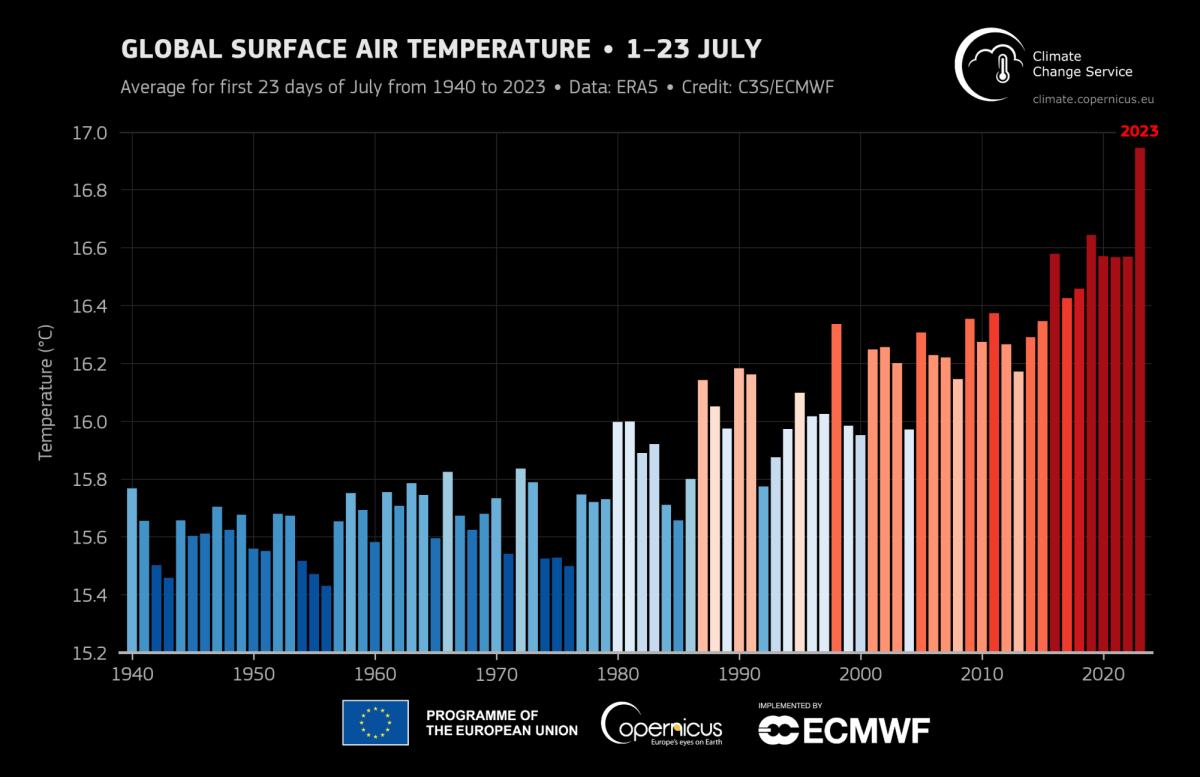The Summer of 2023 has been recorded as the hottest Summer since 1940, according to data collected from the European Union Climate Change Service released on Sept. 6.
On July 7, the average global temperature was 62 degrees Fahrenheit, the highest in the US National Centers for Environment’s prediction data, which dates back to 1979.
While these global temperatures are based on data sets that go back to the mid-20th century, they are almost certainly the warmest the planet has seen in over a much longer period, some scientists say that given what we know from the many millennia of climate data extracted from ice cores and coral reefs.
“It’s not a record to celebrate and it won’t be a record for long, with northern hemisphere summer still mostly ahead and El Niño developing,” Friederike Otto, senior lecturer in climate science at the Grantham Institute for Climate Change and the Environment in the UK, said.
This year has already seen heat records broken around the world, with devastating consequences.
In the US, Texas and the South sweltered in a brutal heat wave in late June with triple-digit Fahrenheit temperatures and extreme humidity. Soaring temperatures in Mexico have killed at least 112 people since March.
A searing heat wave in India killed at least 44 civilians across the state of Bahar. Along with India, China has experienced several heat waves and has registered the highest number of hot days.
To finish, the importance of addressing climate change as a global priority, with a commitment to sustainable and responsible practices that can safeguard our planet’s future. Failure to act decisively now will only lead to more extreme weather events and greater challenges for our world in the years to come.















